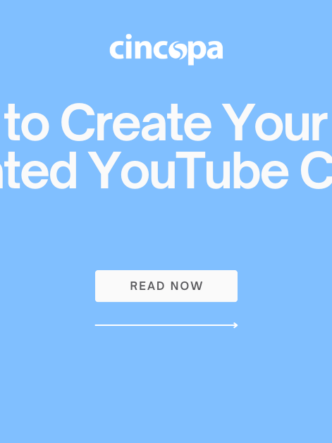
There’s no better way to showcase your SaaS business than with video. Whether it’s demos, user onboarding, or customer testimonials, powerful visuals tell your story better than any other medium.
However, creating video content isn’t just as easy as turning on a camera and pressing record. These days, you need masterful editing, graphics, animations, voiceovers, and more if you want to engage and convert your audience.
Enter video storyboarding. This puts the power of the creative process firmly in your hands, ensuring your video incorporates all the elements you need for the perfect structure, pace, and flow.
Storyboarding helps you visualize and communicate these details in a way that makes sense to everyone involved, supporting stronger collaboration and a streamlined video content creation process.
In this blog, we’ll explore how you can use video storyboarding effectively to optimize your SaaS video content creation and make sure you get it right every time. Ready to jump in? Keep reading to learn more.
What sets SaaS content creation apart from traditional content?
Creating content for SaaS products is a whole different ball game from traditional content creation. With SaaS, the product is intangible, technical, and ever-evolving, which makes it a little bit more complex to visualize and market. Here’s what sets SaaS content apart:
Content is closely tied to the product’s value proposition
SaaS videos often focus on demonstrating the product’s value proposition. Since SaaS products offer services and solutions rather than physical goods, video content must effectively communicate how the product addresses specific user needs. Video storyboarding helps you map out each video element to make sure your messaging is on brand, clear, and engaging.
Highlights product ROI and competitive advantage
The SaaS market is a competitive arena, which means businesses must do all they can to explain how their product can save time, reduce costs, or increase efficiency.
Demonstrating a clear return on investment (ROI) through case studies, testimonials, or explainer videos can be a critical element in the storyboarding process. Each scene should highlight the competitive advantage of the product, helping potential customers see why your software is worth investing in.
Take Hubspot’s sales software, for example. Their explainer video highlights how their software will boost ROI and accelerate growth. Later, they demonstrate several reasons their product stands out from competitors, emphasizing the customer support and integration options they provide and, ultimately, illustrating their comprehensive offering.

Prioritizes user education and onboarding
Unlike traditional content that may focus more on brand storytelling, SaaS videos often prioritize user education and onboarding.
You may have the best product on the market, but if your customers don’t know how to use it, your business will suffer. Storyboarding educational content, such as tutorials and how-to videos, allows you to break down complex features into digestible segments, guiding users step by step.
Stronger emphasis on product features and benefits
Diving into product features and showcasing their benefits in real-world scenarios is an absolute must for SaaS companies.
Creating a video storyboard enables SaaS creators to carefully plan how these features will be presented visually and narratively. You can choose exactly how to introduce and communicate each feature, perhaps using interviews with customers to discuss pain points and how your product solves them.
As another example, let’s look at Sage’s accounts receivable software. Sage produces expert-led, on-demand demos, clearly showing the main features of their accounts receivable solution, Sage 50, explaining how it addresses pain points and delivers key benefits.
This information is presented via product visuals, footage of customers successfully using the software, and helpful narration that showcases it as a solution.

Steps to use storyboarding for SaaS video content creation
Now you understand the importance of video storyboarding, let’s take a closer look at how the process works.
Define clear video objectives (e.g., lead generation, product demo)
The first step before you put pen to paper (or video to storyboard) is to decide why you’re making this video and what you want it to do. For example, are you hoping to generate leads with the video? Is this a product demo or a training video? Outlining your goals and objectives will help you craft the perfect video and make sure you can present the key messages to the target audience.
For example, if you’re creating a product demo video, you’ll want to showcase the product’s key features in a clear, step-by-step format so viewers can understand the user journey and how it works. On the other hand, a video designed to generate new leads will require compelling calls to action, with an overview of your audience’s pain points and the benefits and results they’ll see from using your product.
Anchor audience research on needs, preferences, and pain points
If you want to create a compelling video that resonates with your audience, you first have to understand who that audience is and what they’re looking for. Conduct market research and leverage your existing customer data to create multiple audience personas so you can craft content that speaks to their needs.
Every frame in your storyboard should appeal to your audience’s pain points and preferences, demonstrating your understanding and how your solution can fix their problems.
As a SaaS business, you’ll likely be speaking to global customers, so consider using a localization tool to adjust your content for different markets and languages and ensure success.
For example, Spotify’s Spanish video support pages are available in European and Latin American Spanish, acknowledging their differences and appealing to both markets.

Craft a compelling script based on a clear narrative
Once you have a clear idea of your objectives and audience, it’s time to work on your script. How you craft a compelling narrative will depend on the purpose of the video (i.e., where it’s a sales or training video), but your script should have a logical flow.
If you’re presenting a problem your audience faces, you should then follow it up with a demonstration of how your product addresses that issue, explore specific product features and benefits, and end with a clear call to action so viewers know what to do next.
Create visual representations for each scene and frame
The visuals are the most important aspect of your video. Once your script is finalized, start sketching out key scenes and frames for your video. Storyboarding these critical aspects will allow collaborators to see your vision and help you bring that vision to life.
You don’t need to be an artist to create a functional storyboard—simple sketches, images, or even a shot list can suffice. The goal is to have an idea of how each shot will look, what visuals you need, and how you’ll transition between scenes.
Maintain visual consistency with company branding elements
Keeping your branding consistent is crucial in SaaS video content. When you’re mapping out your storyboard, be sure to incorporate all the key branding elements of your business. Colors, fonts, logos, and visual styles should all follow the same standards as your website and other content – this makes it instantly recognizable, reinforcing your brand image across all platforms.
Don’t forget that brand guidelines don’t just apply to visuals— – think about the tone of voice in the narration and make sure your messaging is aligned with your brand.
Incorporate interactive elements to engage audiences
SaaS videos can go well beyond static content by incorporating interactive elements. Using interactive features will encourage engagement from your audience, and you’re less likely to lose their attention. Consider adding clickable buttons, hover-over animations, and chapter breaks to make your videos more engaging and user-centric.
When storyboarding, keep these interactive elements in mind and identify the best places to add them. For example, in a product demo video, you could add interactive hotspots that allow users to explore features in more detail, making the content feel more immersive.
You could also consider hosting webinars to compliment your video content and really drive engagement with your audience. Again, Sage is a good example of this as it offers valuable webinars designed specifically for its audiences, such as nonprofit coordinators or financial services professionals.

This video content encourages participation by involving viewers in the webinar, allowing them to ask questions and interact with your team. On top of this, as you can see in this example, it also helps you to distinguish your brand as an industry thought leader as you dig deeper, discuss market trends and advise on best practices.
Include a direct call to action for viewers to follow
A key element of any SaaS video is a direct call to action (CTA). Your storyboard should incorporate a strong, clear CTA that guides viewers toward the next step, whether that’s signing up for a free trial, booking a demo, or exploring more product features.
Position your CTA strategically within the video—typically at the end or after a significant value proposition has been demonstrated. Make sure the CTA stands out visually and is easy for the audience to act upon.
Use the storyboard as a production guide for shooting and editing
Not only does your storyboard give you a better idea of what your video will look like, but it also informs the shooting and editing process. Cameramen and editors won’t have to keep asking what you want, and there’s less risk of them using their creative license to develop something completely unsuitable.
The storyboard can also help with budgeting and scheduling, allowing you to map out the necessary shots, equipment, and team resources needed to bring the video to life. This will reduce the likelihood of spending money you don’t have or having to pay additional fees for last-minute resources— – a financial strategy your accounting department will be very thankful for.

Ensure smooth storyboard collaboration with video suppliers
The storyboard is your chance to get your vision out of your mind and down on paper. This not only helps you organize your thoughts and get a clear view of what you want the video to look like, but it also helps your collaborators see what you’re picturing and how they can contribute.
This makes it an easier and more streamlined affair for all involved. If everyone can see the plan and understand what the video should look like, this minimizes confusion and delays.
Collaborative tools like cloud-based storyboarding software can make it easy for all stakeholders to provide input, suggest changes, and align their efforts.
Wrapping up
Storyboarding is essential if you want to optimize SaaS video content creation. Planning out each phase of your video production will help you create something aligned with your goals, visually appealing, and consistent with your branding.
From defining video goals to enhancing audience engagement, storyboarding streamlines the process and helps SaaS companies produce high-quality, effective video content. This approach will ensure your content becomes a powerful asset, driving conversions, educating users, and showcasing your product’s true value.










